In Tivoli, Villa Gregoriana continues its path of protection and enhancement thanks to a series of interventions that combine technology, sustainability, security and accessibility. In fact, the latest works dedicated to the conservation and management of this site entrusted to FAI - Fondo per l’Ambiente Italiano ETS by theAgenzia del Demanio in 2002 were presented in recent hours. This is a new chapter in a care project that the Foundation has been carrying out for over 20 years, combining maintenance, extraordinary interventions, research and innovation to preserve a landscape and historical heritage among the most complex and delicate in Italy.
The recently completed interventions, carried out with the contribution of the Lazio Region underPublic Notice Intervention 2 (DTC) for the research and development of technologies applied to cultural heritage, introduced advanced tools for monitoring the park’s slopes, an innovative sustainable lighting system designed by marionanni, a new accessible path designed to expand the usability of the site, and a series of digital and multidisciplinary contents that enrich the visiting experience. Different but closely related elements that meet the needs of safety, conservation, inclusivity and narrative, and that aim to improve access a place whose karst nature and morphological conformation require specialized technical solutions and constant management. Over time, therefore, it has been necessary to build piling and wickerwork to contain the slopes, along with rockfall nets to control and stabilize areas particularly prone to erosion. Qualified and highly skilled personnel for rope work intervene cyclically to inspect the slopes of the Villa, check the stability of the trees, carry out the necessary pruning to lighten the vegetation, and remove any parts of rock at risk of landslides.
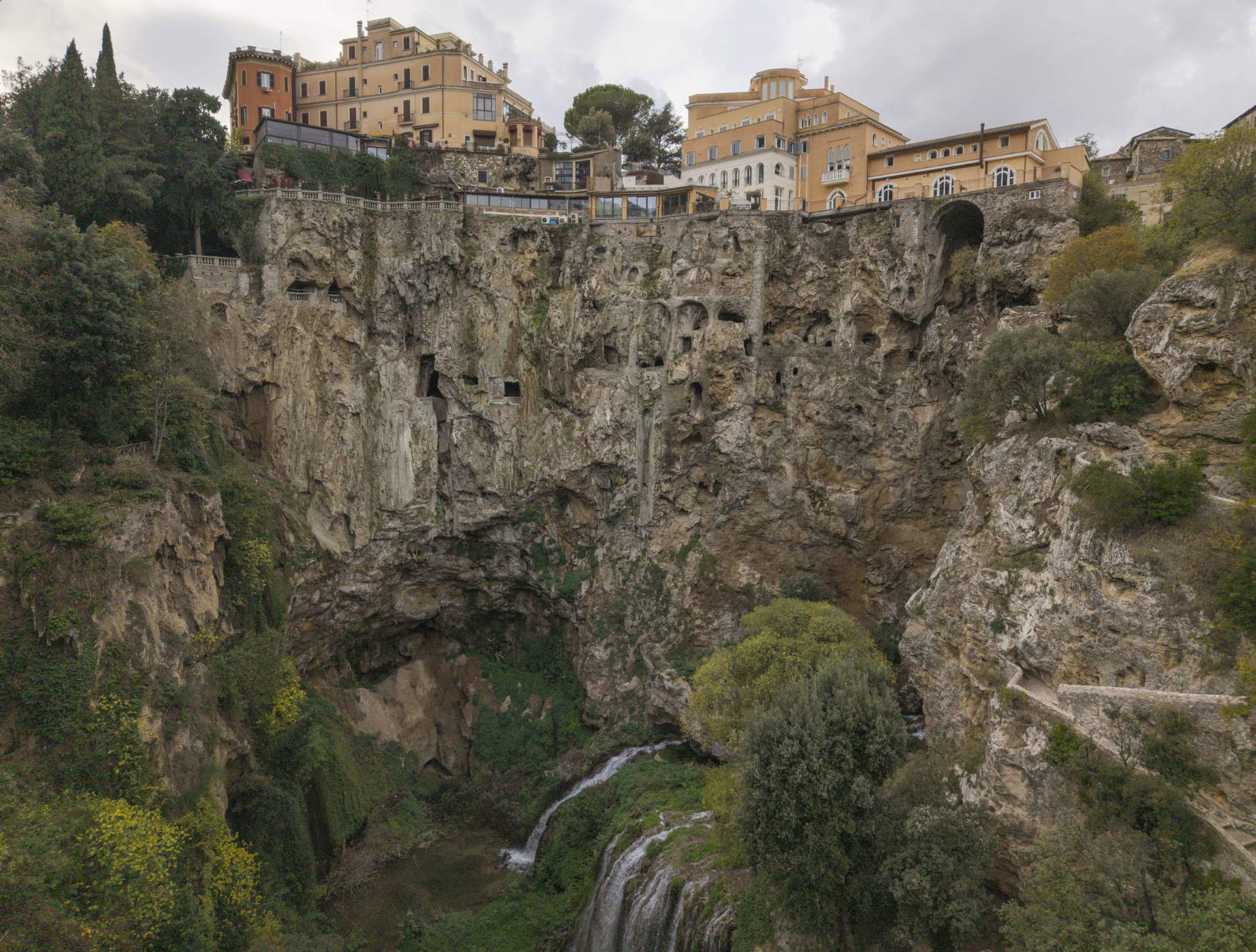


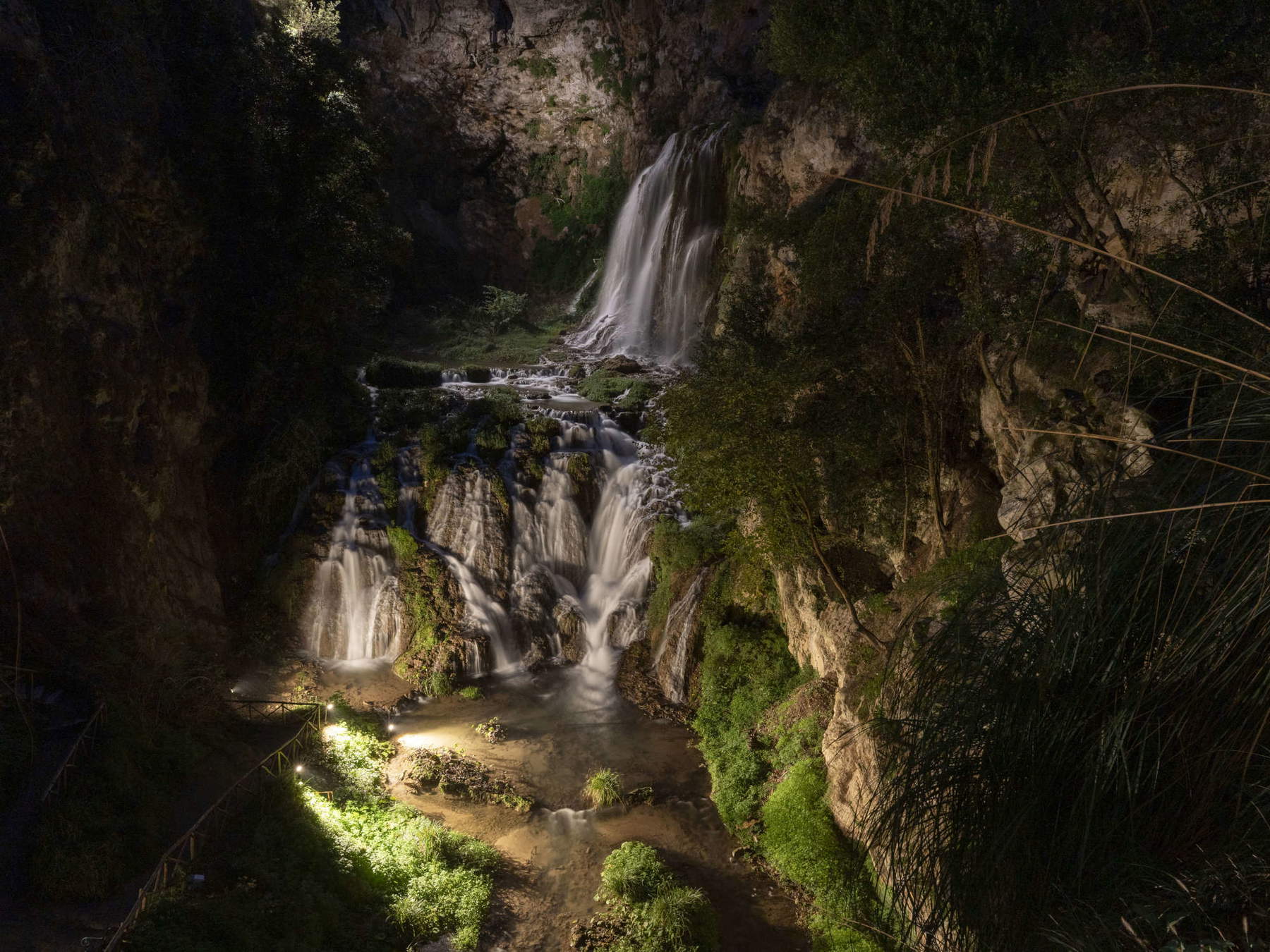
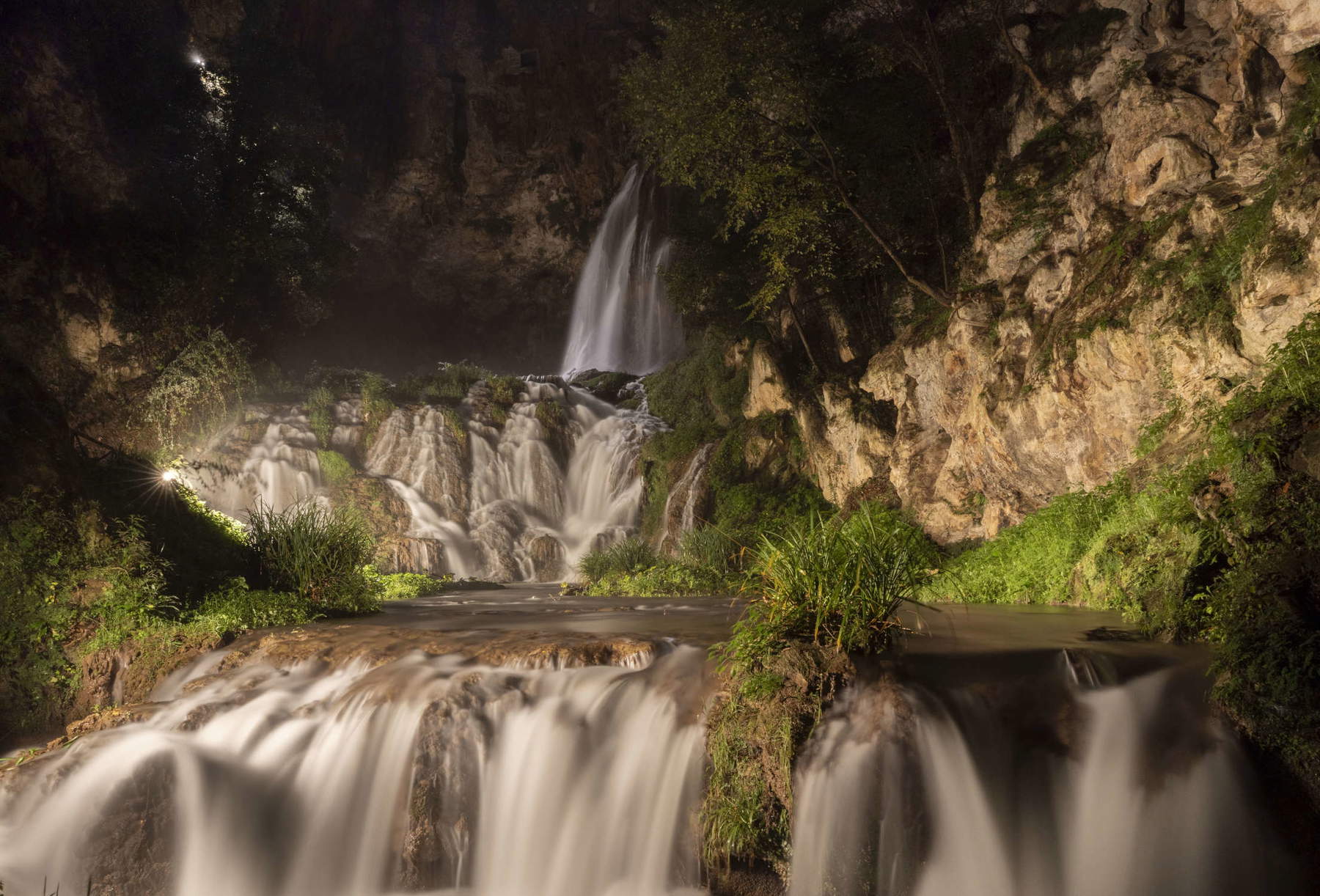

In recent years Villa Gregoriana has had to deal with the consequences of increasingly intense and sudden climatic events that have aggravated the fragility of a context naturally exposed to hydrogeological instability. The deep gorge carved by the Aniene River, the steep slopes and the presence of historical monuments integrated in the landscape create an extraordinary but vulnerable environment that needs continuous controls and timely interventions. For this reason, one of the pillars of the new project was the inclusion of an advanced hazard monitoring system aimed at preventing landslides and mudslides. On the most exposed slopes, as well as on the Temple of Sibyl, the Temple of Tiburno , and the remains of the Villa of Manlius Vopiscus, 67 sensors have been installed that record millimeter movements of the rock walls and architectural structures. The wall, covering nearly 5,000 square meters, has been cleared of vegetation and inconsistent material thanks to specialized ropework teams capable of operating under complex conditions and in safety.
The system is managed remotely through dedicated software that allows FAI staff to monitor each sensor in real time, intervening quickly in case of anomalies and scheduling cyclical checks and maintenance. This is a crucial measure, given the experience of the last few years: in 2021 the rock face under the Miollis burrow gave way with more than seventy cubic meters of landslide material, while in 2022 there was a slope slide under the substructures of the Manlio Vopisco Villa. Climatic dynamics, with alternating long periods of drought and sudden and substantial rainfall, have made slope behavior more unpredictable. In this context, technological monitoring is an essential tool for protecting the property and ensuring the safety of visitors.
Alongside measures to protect the park from hydrogeological risk, one of the most significant interventions involves new lighting designed by marionanni, known for his ability to transform spaces through environmentally and architecturally friendly light. The project stems from a direct dialogue with the place and the desire to enhance the night dimension of the park without altering its natural balance. The goal is to “write a light capable of guarding the dark,” as it is defined in the project, through restrained illuminance values, precise control of each light fixture, and careful use of natural surfaces as reflective elements.
The new light welcomes visitors already at the entrance, in the historic ticket office, and accompanies them along the main route passing from the viewpoint over the Great Falls to the Gregorian Tunnels, from the cypress area to the Vopisco area, and to Ponte Lupo. The waterfalls, in particular, are illuminated with the movement of the water, the reflections and the depth of the pools and jumps that characterize the valley in mind. The lighting is thus conceived as a light fabric inserted into the landscape, capable of suggesting paths and visions without ever imposing itself.
There are three main types of light introduced: the neptune lume, which exploits the foliage of the trees by making them moving reflective surfaces; the campanella, a natural brass lamp distributed along the paths to guide visitors with small, non-invasive points of light; and finally the lucerna, designed specifically to illuminate the area of the remains of the Villa of Manlio Vopisco without the need for excavations or permanent installations. This last solution, totally battery-operated, ensures the protection of the archaeological integrity and at the same time allows for context-friendly lighting. The flexibility of the system allows each individual light point to be adjusted, creating an evocative and safe nighttime environment where the visitor experience extends beyond sunset while respecting the park’s rich biodiversity.
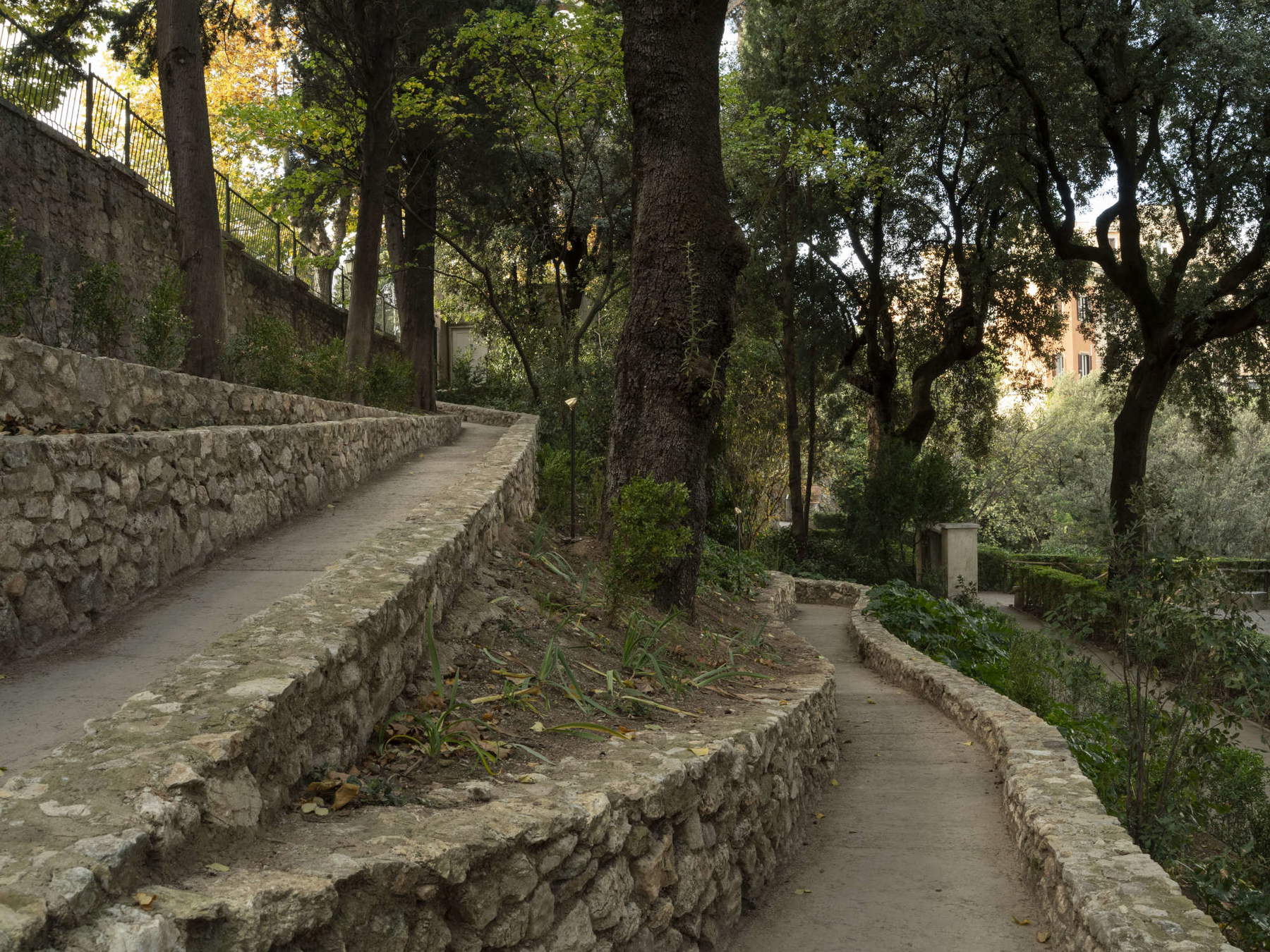
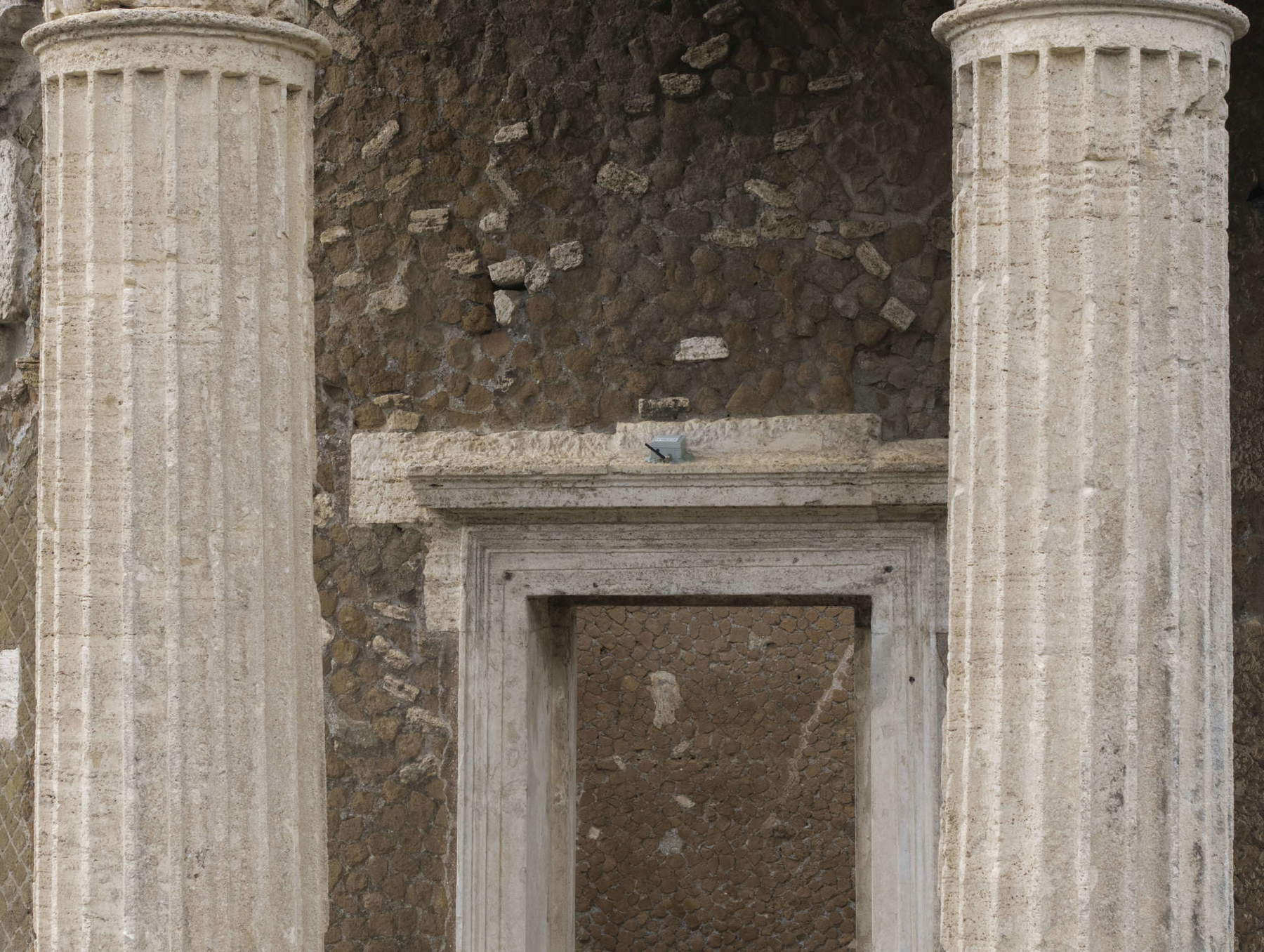
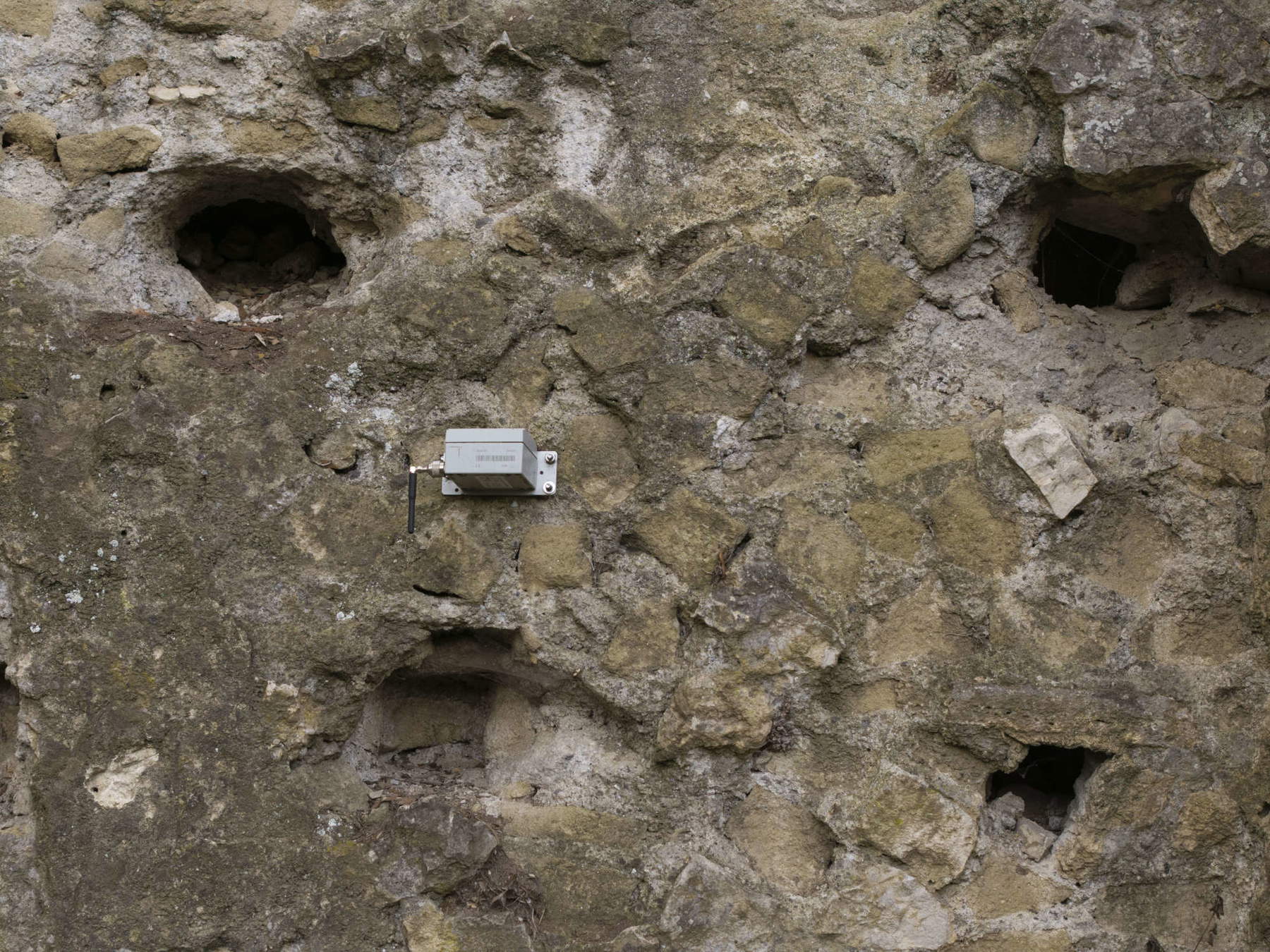
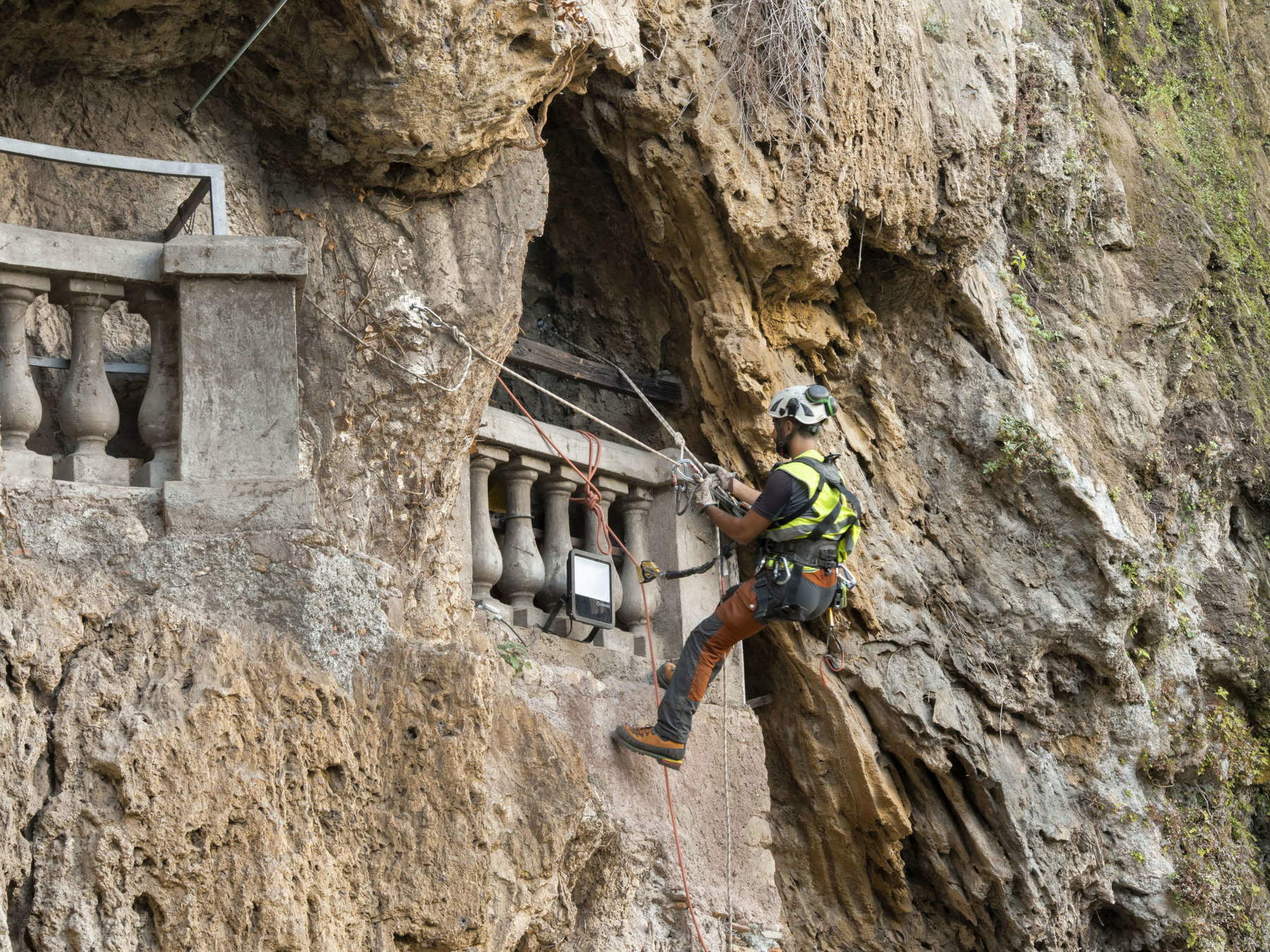
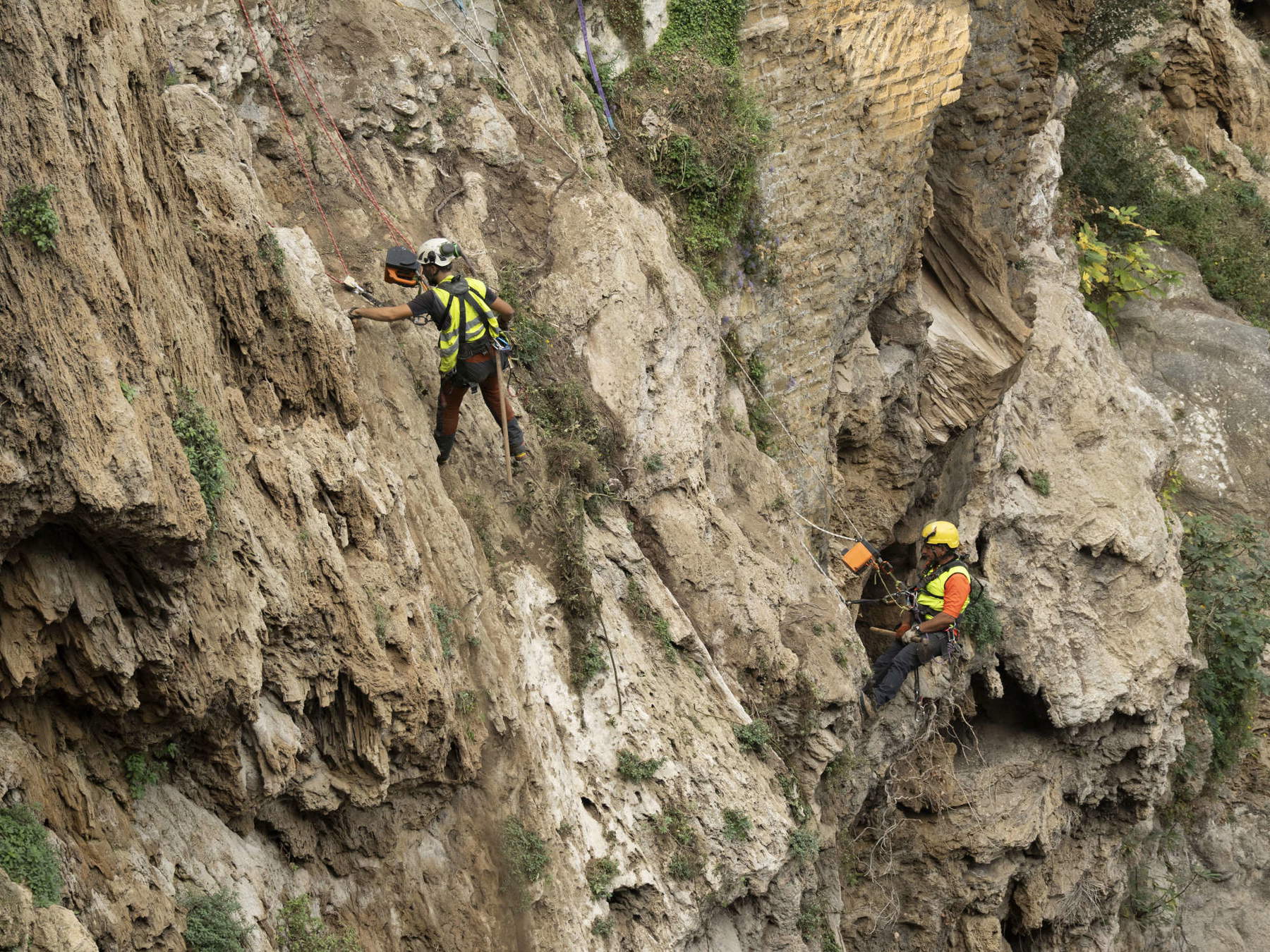

Another significant change concerns the accessibility of the site. The Villa Gregoriana’s 3,800-meter-long visiting route, set in a deep and articulated valley, has a height difference of about ninety meters and numerous natural features that historically have made it complex for people with disabilities or reduced mobility to visit. Prior to this intervention, the possibility of visiting without overcoming significant height differences was limited almost exclusively to the Acropolis area, near the temples of Sibyl and Tiburno. The construction of a new sloping path, accessible directly from the historic ticket office on Via Quintilio Varo, now expands the possibility of enjoying the Villa. The new ramp, harmoniously integrated into the landscape and architectural context, makes it easy to reach the Manlio Vopisco area and to enjoy the view from the belvedere over the Great Waterfall. The intervention represents an important step toward a more inclusive approach, respectful of the morphological complexity of the place but attentive to the needs of all visitors.
Finally, FAI has renewed and expanded the visit content, introducing a series of digital and narrative tools that can enrich the public’s experience. Given the growing attendance and interest in the city of Tivoli, the goal is to make a visit to the Villa Gregoriana an opportunity to learn more about the history of the place and, at the same time, to explore the entire Tiburtine territory. The new narrative path includes podcasts accessible via QR code, hosted on a digital platform, and created by Giovanni Carrada, who offers a general overview of the Villa’s history designed especially for first-time visitors. Other podcasts are dedicated to more specific topics such as the fauna and flora of the park or the less visible aspects of the daily management of the property. To complete the project, a series of photographic carousels and video pills trace the history of the Aniene gorge, the Tiburtine context and its most significant events, including natural disasters, historical transformations and engineering firsts.
In continuity with the work done by FAI in its other properties, itineraries have also been created that invite visitors to continue the experience beyond the boundaries of the park, exploring nearby monuments and the surrounding landscape on foot, by bicycle or by car. This is a way to create a link between visiting Villa Gregoriana and discovering the broader identity of the Tiburtine area.
 |
| Villa Gregoriana, new technologies and accessibility for FAI-managed park in Tivoli |
Warning: the translation into English of the original Italian article was created using automatic tools. We undertake to review all articles, but we do not guarantee the total absence of inaccuracies in the translation due to the program. You can find the original by clicking on the ITA button. If you find any mistake,please contact us.